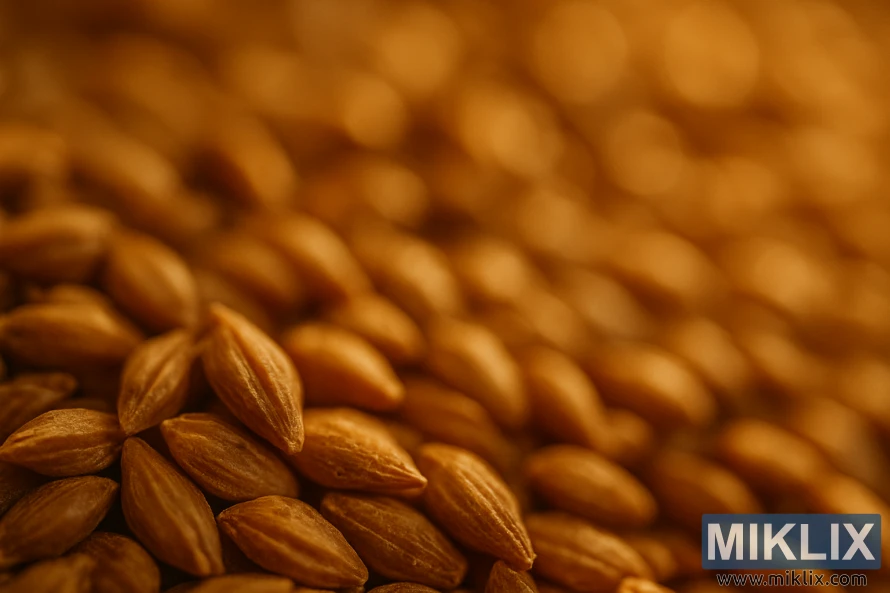Image: Close-up of pale ale malt grains
Published: July 21, 2025 at 2:55:14 PM UTC
Last updated: September 27, 2025 at 3:27:06 PM UTC
A close-up photo of golden-amber pale ale malt grains with warm lighting and soft focus, highlighting their texture, color, and role in beer flavor.
Bathed in warm, natural light, the close-up photograph of pale ale malt grains captures a moment of quiet intensity and tactile beauty. The composition is intimate and focused, drawing the viewer into the granular world of brewing’s foundational ingredient. Each kernel, elongated and slightly tapered, glows with a golden-amber hue that suggests both freshness and careful kilning. The surface of the grains is subtly textured—fine ridges and faint striations run along their husks, catching the light in delicate highlights that emphasize their organic complexity. The lighting, soft and directional, enhances these details without overwhelming them, creating a sense of depth and warmth that invites closer inspection.
In the foreground, a handful of malt grains are rendered in sharp focus, their contours crisp and their coloration rich. These grains appear plump and uniform, indicative of high-quality pale ale malt selected for its enzymatic strength and flavor potential. Their sheen is not glossy, but gently lustrous, suggesting a balance between dryness and residual oils—an ideal state for milling and mashing. The tactile qualities are almost palpable; one can imagine the slight resistance of the husk between fingers, the faint aroma of toasted grain rising from the pile. This sensory suggestion is reinforced by the shallow depth of field, which isolates the foreground grains from the softly blurred background, creating a visual hierarchy that mirrors the brewing process itself: focus on the essential, allow the rest to support.
The background, though out of focus, contributes to the overall ambiance. It fades into a soft bokeh of warm tones, echoing the golden palette of the grains and reinforcing the sense of natural harmony. This blur is not empty—it hints at abundance, at the presence of more malt waiting to be transformed. It suggests a larger context: a malt house, a brewhouse, a place where tradition and technique converge. The visual softness contrasts with the sharpness of the foreground, creating a dynamic tension that adds depth and movement to the image.
This photograph is more than a study in texture and light—it is a portrait of potential. Pale ale malt, with its balanced profile and subtle sweetness, serves as the backbone of countless beer styles. It contributes fermentable sugars, body, and a gentle malt character that can support or complement hops, yeast, and adjuncts. The image captures this versatility, presenting the malt not just as an ingredient, but as a protagonist in the brewing narrative. Its color hints at the final beer’s hue, its texture at the mouthfeel, its aroma at the flavor arc that will unfold in the glass.
In this moment, frozen in amber light, the malt is still. But its stillness is charged with energy—with the promise of transformation, of fermentation, of flavor. The photograph invites the viewer to pause and appreciate the quiet power of grain, to see in its humble form the beginning of something complex and celebratory. It is a tribute to the craft of brewing, to the care that begins long before the boil, and to the beauty that lies in the details.
The image is related to: Brewing Beer with Pale Ale Malt

